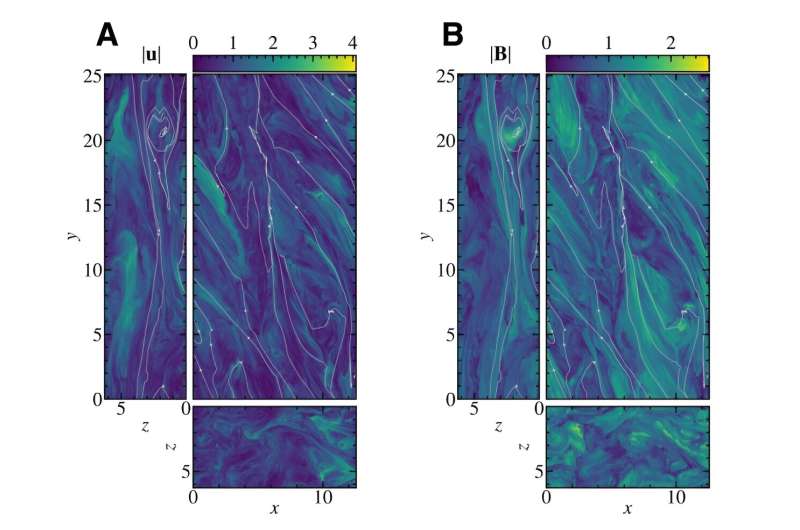Researchers at Tohoku University and Utsunomiya University have made a breakthrough in understanding the complex nature of turbulence in structures called accretion disks surrounding black holes, using state-of-the-art supercomputers to conduct the highest-resolution simulations to date.
An accretion disk, as the name implies, is a disk-shaped gas that spirals inward toward a central black hole.
There is a great interest in studying the unique and extreme properties of black holes. However, black holes do not allow light to escape, and therefore cannot be directly perceived by telescopes.
In order to probe black holes and study them, we instead look at how they affect their surroundings. Accretion disks are one such way to indirectly observe the effects of black holes, as they emit electromagnetic radiation that can be seen by telescopes.
“Accurately simulating the behavior of accretion disks significantly advances our understanding of physical phenomena around black holes,” explains Yohei Kawazura, “It provides crucial insights for interpreting observational data from the Event Horizon Telescope.”
The researchers utilized supercomputers such as RIKENs Fugaku (the fastest computer in the world up until 2022) and NAOJs ATERUI II to perform unprecedentedly high-resolution simulations.
The study was published in Science Advances on August 28, 2024.

Although there have been previous numerical simulations of accretion disks, none have observed the inertial range because of the lack of computational resources. This study was the first to successfully reproduce the “inertial range” connecting large and small eddies in accretion disk turbulence.
It was also discovered that “slow magnetosonic waves” dominate this range. This finding explains why ions are selectively heated in accretion disks. The turbulent electromagnetic fields in accretion disks interact with charged particles, potentially accelerating some to extremely high energies.
In magnetohydronamics, magnetosonic waves (slow and fast) and Alfvén waves make up the basic types of waves. Slow magnetosonic waves were found to dominate the inertial range, carrying about twice the energy of Alfvén waves. The research also highlights a fundamental difference between accretion disk turbulence and solar wind turbulence, where Alfvén waves dominate.
This advancement is expected to improve the physical interpretation of observational data from radio telescopes focused on regions near black holes.
More information:
Yohei Kawazura et al, Inertial range of magnetorotational turbulence, Science Advances (2024). DOI: 10.1126/sciadv.adp4965
Provided by
Tohoku University
Citation:
Supercomputer simulations reveal the nature of turbulence in black hole accretion disks (2024, August 29)
retrieved 29 August 2024
from
This document is subject to copyright. Apart from any fair dealing for the purpose of private study or research, no
part may be reproduced without the written permission. The content is provided for information purposes only.